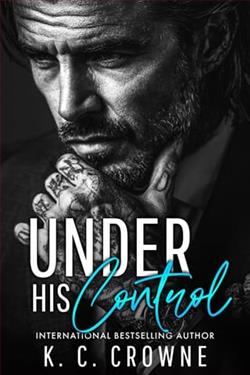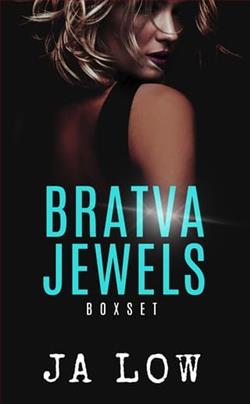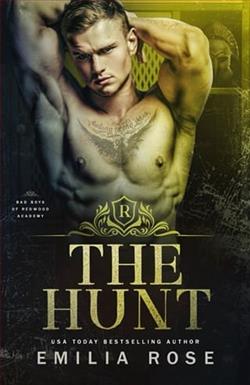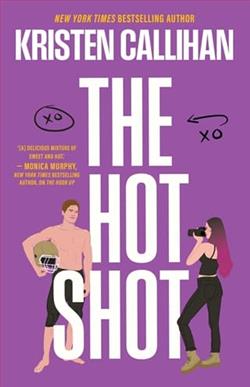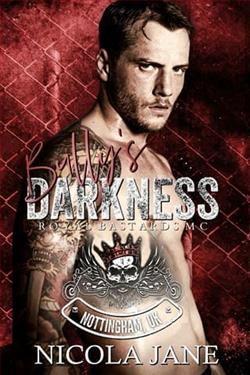Page 80 of My Bloody Valentine
“These girls...” she whispers.
“Brought in as ‘kitchen staff.’ Never seen again.” My hands clench. “The police are bought off. The owners are protected by powerful people. No one helps them.”
Amelia sinks into a chair, her face pale. After a long moment, she says, “Remember Gregory Walsh?”
“The gallery owner?”
“He promised to showcase my work. Said I had real talent.” Her voice hardens. “But there was a price. When I refused, he blacklisted me. Three other female artists came forward later with similar stories. He still runs the biggest gallery in Chicago.”
“That’s why we do this,” I say softly. “Because sometimes the system protects the predators.”
She looks at me, really looks at me, for the first time since she found those files. “I understand wanting justice. But murder, Maya?”
“We give them what they deserve. No more, no less.” I meet her gaze. “And yes, we use their blood. It’s our way of transforming them into something meaningful.”
Amelia rubs her temples. “This is insane. But I get it. God help me, I actually get it.”
I study Amelia’s face as understanding dawns in her eyes. Her information processing has always been different—methodical, pattern-seeking, and exact. For example, she arranges her paint tubes by color temperature rather than just basic hues. She can spot minute details in compositions that others miss completely.
“You see things differently, too, don’t you?” I ask softly. “That’s why you can break down art into its fundamental elements.”
She nods slowly. “I notice everything. Sometimes, too much. The textures, the subtle color shifts, the geometric relationships...” Her fingers tap rapidly on her knee—a self-soothing gesture I’ve seen countless times. “People think I’m obsessive about details, but I can’t help seeing all the layers.”
“Like how you knew Walsh was dangerous before anyone else came forward?”
“His smile never reached his eyes. And he’d arrange meetings at odd hours, always changing the time last minute.” Her body trembles. “The patterns were there.”
“That’s how I experience emotions through the taste of food. The layers, the subtle shifts.” I pause. “And that’s how we identify our victims because their actions form patterns, too.”
“Predatory patterns,” Amelia whispers. Her hands flutter to arrange the pens on the nearby desk into perfect parallel lines. “Like Walsh. Like those restaurant owners.”
“Exactly. We see what others miss. Society calls us different, but maybe we just process the world more thoroughly.”
Amelia’s eyes meet mine, sharp with recognition. “That’s why you and Adrian connected so deeply. You both see beyond the surface.”
“Yes.” I reach for her hand, and she keeps herself rooted this time. “We’re not monsters, Amelia. We’re just different. And we use our differences to protect others who can’t see the dangers we can.”
I walk Amelia to the boutique’s door, my heart pounding against my ribs. She pauses at the threshold, her artist’s hands fidgeting with her scarf.
“I need time to process this,” she says. “I’m going home to get some perspective.”
“I understand.” The words catch in my throat. “Thank you for listening.”
She gives me a tight nod and steps out into the cold Chicago afternoon. I watch her figure disappear around the corner before turning back inside.
Adrian stands at his workstation, methodically tempering a batch of dark chocolate.
“What was that about?” His knife scrapes across the marble with mechanical precision.
I take a deep breath. “She found some files in Gabe’s office. Photos. Recipes.” My fingers trace patterns on the cool counter. “She knows everything.”
The knife stops mid-stroke. Adrian’s knuckles whiten around the handle.
“Everything?” His voice drops to that dangerous whisper I’ve come to recognize.
“The special ingredients. The victims. She saw pictures of me from before we met.” I step closer to him. “She knows you were watching me.”
Adrian’s jaw clenches. The chocolate on his spatula starts to set as he processes this information.








